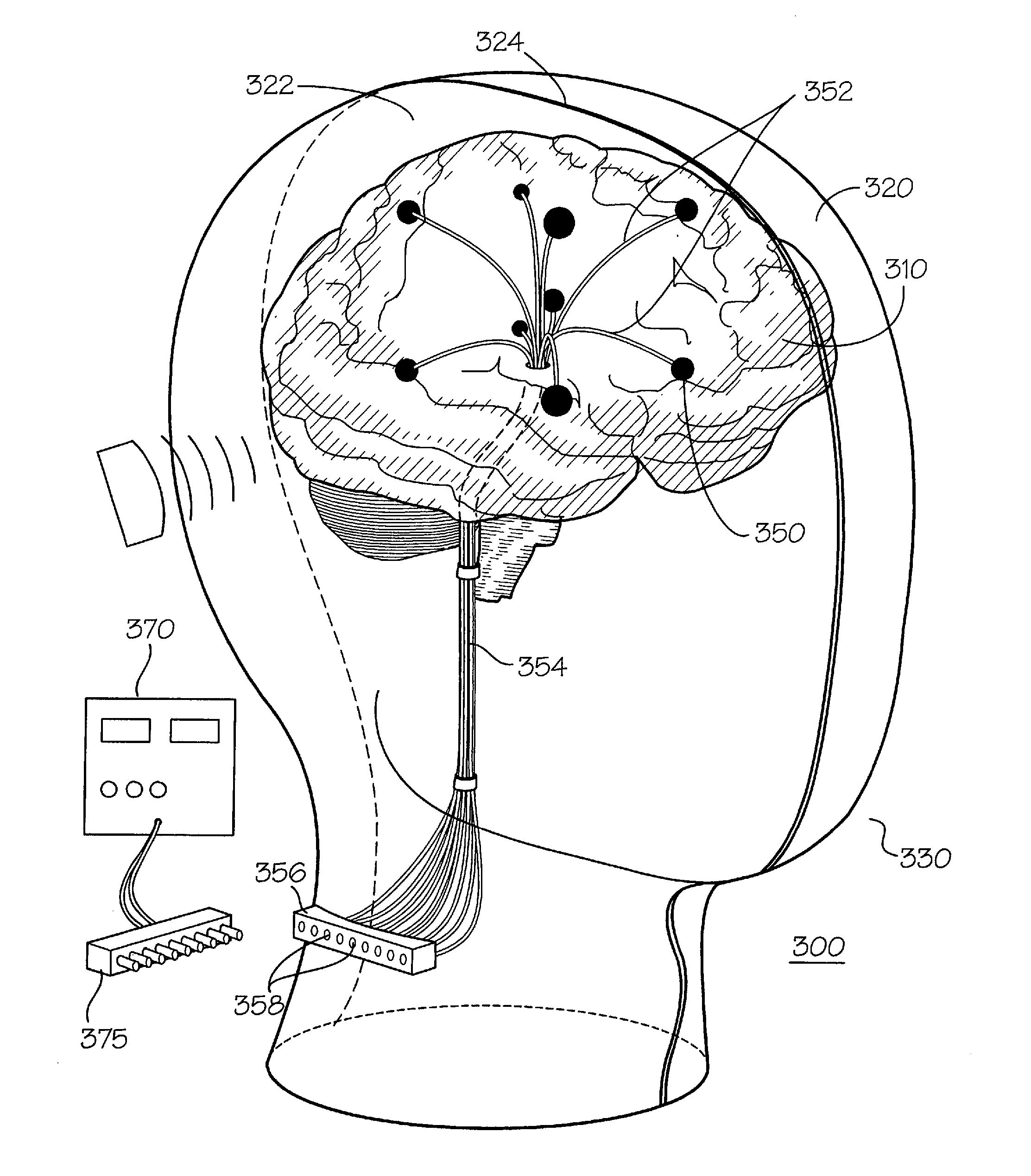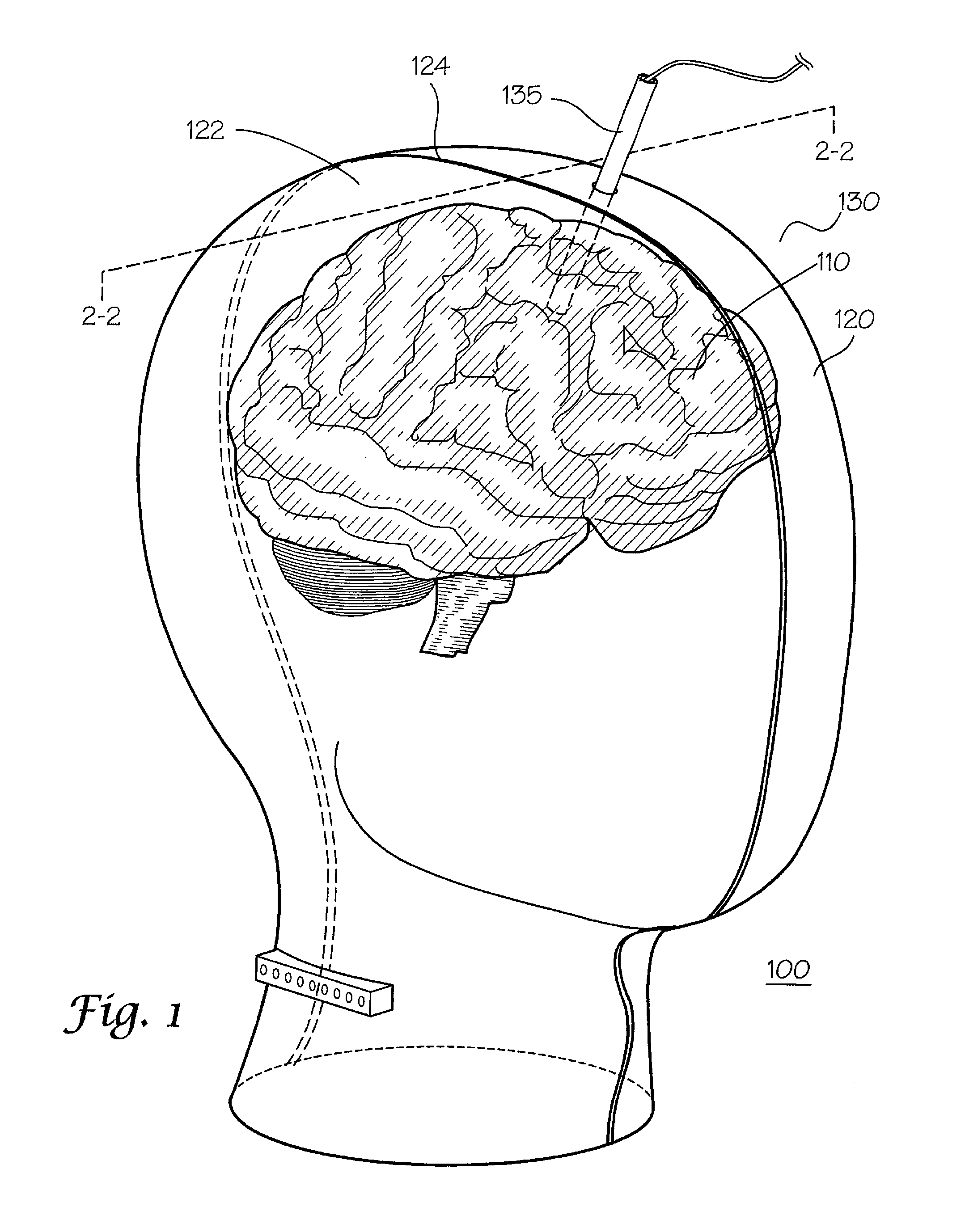Dielectric properties models and methods of using same
a technology of dielectric properties and models, applied in the field of dielectric properties models and methods of using same, can solve the problems of difficult quantitatively describing devices, general complexity of models that are needed, and limited models, so as to reduce product quality, increase development costs, and prolong product timelines
- Summary
- Abstract
- Description
- Claims
- Application Information
AI Technical Summary
Benefits of technology
Problems solved by technology
Method used
Image
Examples
example 1
Calculation of Dielectric Properties
[0089]The determination of dielectric properties of tissues is necessary to design appropriate tissue analog materials that closely simulate such properties. According to a specific embodiment, the conductivity [S / m] and the relative permittivity of tissues so that appropriate tissue analog materials can be fabricated. One can determine this by conducting an evaluation of a human or nonhuman tissue, such as by the techniques taught at http: / / www.brooks.af.mil / AFRL / HED / hedr / reports / dielectric / Report / Report.html; or K R Foster et al 1979 Phys. Med. Biol. 24 1177-1187. Alternatively, one can based the design of tissue analog materials on dielectric property values previously determined and publicly available. A recent compilation of Gabriel et al. covers a wide range of different body tissues and offers equations to determine the appropriate dielectric values at each desired frequency. C. Gabriel, S. Gabriel, and P. Mason. Compilation of the Dielectr...
example 2
Tissue Analog Material Simulating Dielectric Properties of Brain
[0095]Tissue analog materials comprised of hydrogels are typically employed to construct tissues in which dielectric properties are simulated. Provided below are examples of hydrogel formulations that may be used. It is noted that such hydrogel materials are typically doped with metal (aluminum, tin, or iron) and nonmetal (silicon or carbon) powders and / or salts, as appropriate, to achieve or alter the dielectric properties of a material depending on the tissue intended to be simulated.
[0096]In one embodiment, the hydrogel material is formed by admixing a monomer, water, and an initiator. The monomer polymerizes to form a polymer network. By way of example only, the admixture of components may comprise about 10 to about 50 percent, by weight, monomer; about 0.1 to about 5 percent, by weight, initiator, and about 45 to about 85 percent, by weight, water. In a specific example, the monomer used is n-vinyl pyrrolidone or h...
PUM
 Login to View More
Login to View More Abstract
Description
Claims
Application Information
 Login to View More
Login to View More - R&D
- Intellectual Property
- Life Sciences
- Materials
- Tech Scout
- Unparalleled Data Quality
- Higher Quality Content
- 60% Fewer Hallucinations
Browse by: Latest US Patents, China's latest patents, Technical Efficacy Thesaurus, Application Domain, Technology Topic, Popular Technical Reports.
© 2025 PatSnap. All rights reserved.Legal|Privacy policy|Modern Slavery Act Transparency Statement|Sitemap|About US| Contact US: help@patsnap.com



